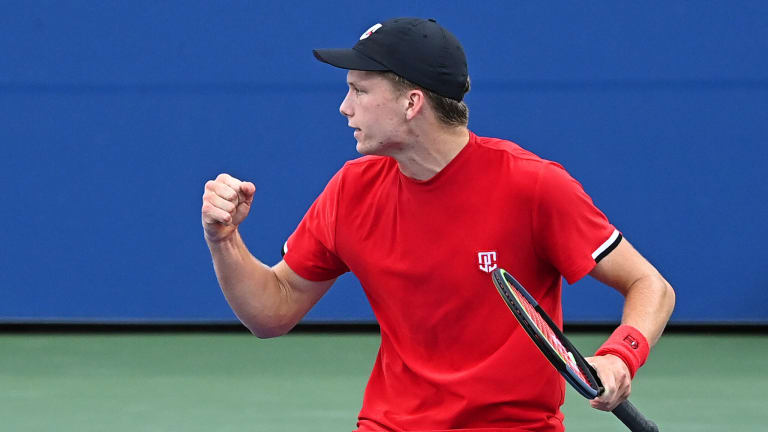US Open
Jenson Brooksby tops Taylor Fritz in four-hour war of blazing winners, crazy tiebreakers—and one around-the-netpost miracle
By Sep 03, 2021US Open
Eric Butorac will replace Stacey Allaster as US Open tournament director
By Nov 17, 2025US Open
Beyond The Champions: 2025 US Open Winners and Losers
By Sep 10, 2025US Open
In US Open defeat, Jannik Sinner faces his shortcomings
By Sep 09, 2025US Open
Amanda Anisimova's US Open fortnight wasn't just "incredible"—it was redemptive
By Sep 09, 2025US Open
Overcoming Doubt, Finding Deliverance: Six WTA takeaways from the 2025 US Open
By Sep 08, 2025US Open
Service and a smile: How Carlos Alcaraz conquered Jannik Sinner at the 2025 US Open
By Sep 08, 2025US Open
Carlos Alcaraz captures sixth Slam and second US Open title, dethrones No. 1 Jannik Sinner
By Sep 07, 2025US Open
Alcaraz vs. Sinner US Open final start delayed by 30 minutes
By Sep 07, 2025US Open
Blinding Lights: Amanda Anisimova rues missed opportunities, serve woes after US Open final
By Sep 07, 2025Jenson Brooksby tops Taylor Fritz in four-hour war of blazing winners, crazy tiebreakers—and one around-the-netpost miracle
You'll need to see it to believe it.
Published Sep 03, 2021
Advertising
Advertising

Brooksby can play with physicality, he can hit blazing winners and use his opponent’s pace, but he also has a knack for anticipating his opponent’s shots, and hitting his own where the other guy isn’t.
© 2021 United States Tennis Association